Author: Qiukaijun
Recently, the “Dongche Test Ground” program of Dongchedi conducted a collision test between the Aero S of Jixiong and another electric vehicle brand. At 50% overlap with a speed of 65 km/h, the Aero S of Jixiong performed very well. After the collision, the passenger compartment was deformed very little, the doors could be opened smoothly, and the battery pack did not emit smoke or catch fire.
Why can the Aero S of Jixiong withstand such a collision?
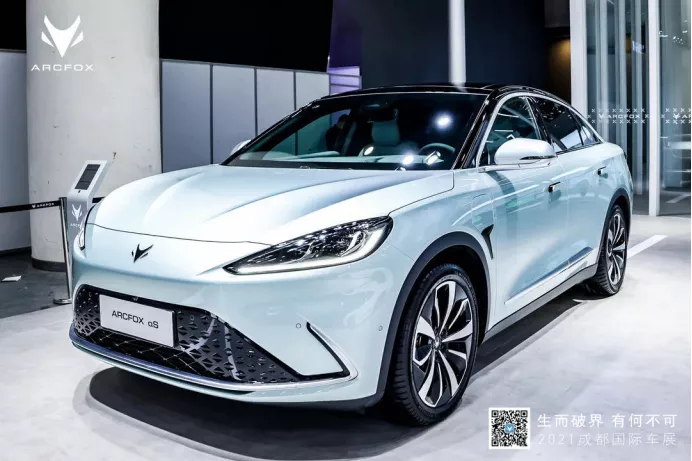
On August 29th, Jixiong Motors held an event “Decoding the Body Architecture of Jixiong Technology Day” at the Chengdu Auto Show, where it detailed the IMC architecture of Jixiong Motors, especially the design of the body structure, and explained the principle of the safety of the body structure of the Aero S of Jixiong for us.
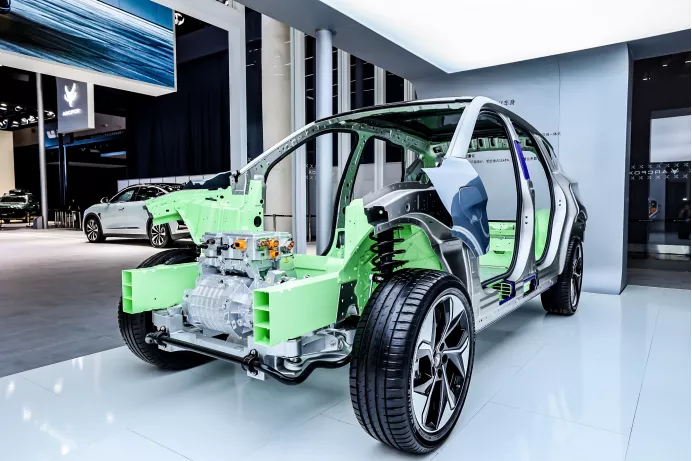
Collision Tells You What Safe Body is
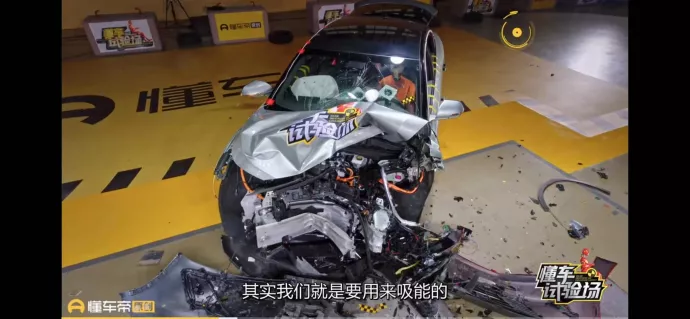
In the test of Dongchedi, the Aero S of Jixiong looked quite miserable. However, first of all, it should be clear that this was a 50% collision at a speed of 64 km/h, and both vehicles weighed over 2 tons, so the impact force was huge. Secondly, it should be noted that although the front compartment of the Aero S of Jixiong was completely deformed in the collision, the driver’s cab was basically intact.
This collision test demonstrated very well what a safe body looks like.
In a fierce collision, keeping the car safe is not a matter of making the body strength as high as possible, but making strong where it should be, and resilient where it should be.
Where it should be strong: the compartment contains the driver and passengers, and the space they occupy needs to be stable and cannot be compressed by a collision, otherwise it will threaten their safety.
Where it should be resilient: in a fierce collision, if the huge momentum is not buffered, it will all be transferred to the passenger compartment, causing the passengers in the compartment and the car to collide “head-on” instantly. Even if there are no external injuries, the brain and internal organs may be seriously injured, even life-threatening.
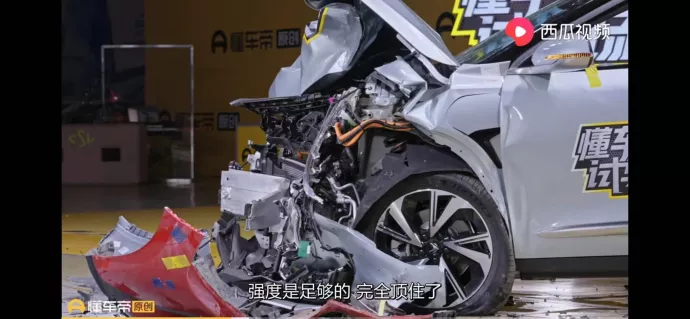 The Geely Lynk & Co Zero Concept S has a ‘tough’ feature – it performs very well in collision energy absorption. The collision energy absorption structure is added to the front sub-frame at several crush guide grooves together with the full frame structure, enabling the front sub-frame to absorb collision energy during vehicle collisions.
The Geely Lynk & Co Zero Concept S has a ‘tough’ feature – it performs very well in collision energy absorption. The collision energy absorption structure is added to the front sub-frame at several crush guide grooves together with the full frame structure, enabling the front sub-frame to absorb collision energy during vehicle collisions.
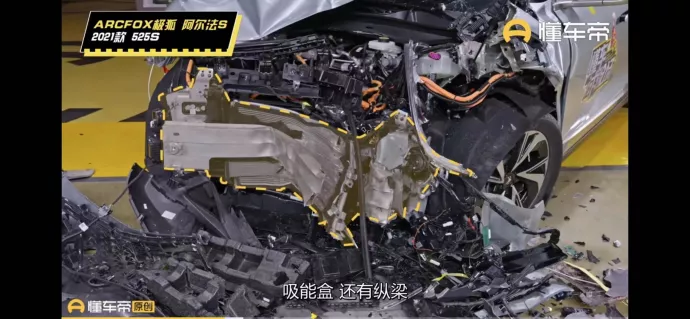
Especially, Geely Lynk & Co Zero Concept S adopted a new aluminum alloy material with higher yield strength and a collision folding and crush angle of more than 110°. The front longitudinal beam can fold and absorb energy in a strong collision, mitigating part of the impact force.
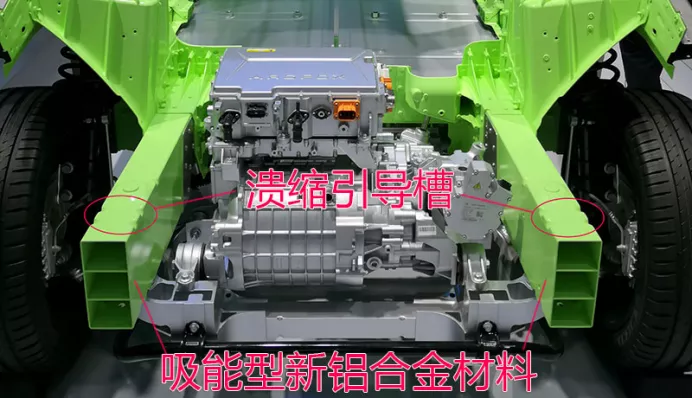
Of course, aluminum alloy also has certain strength, and it will not collapse at the slightest touch. In conclusion, it is necessary to strike a balance between crushability and strength.
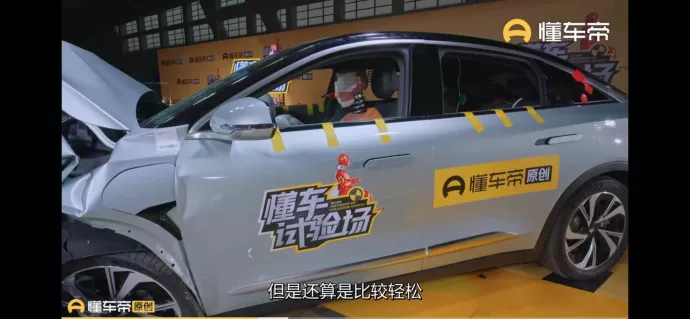
Looking at the collision test performed by the Autohome, except for the left front of the vehicle where the collision is directly encountered, part of the wheel hub moves backward, pushing some fender into the door while being substantially intact.
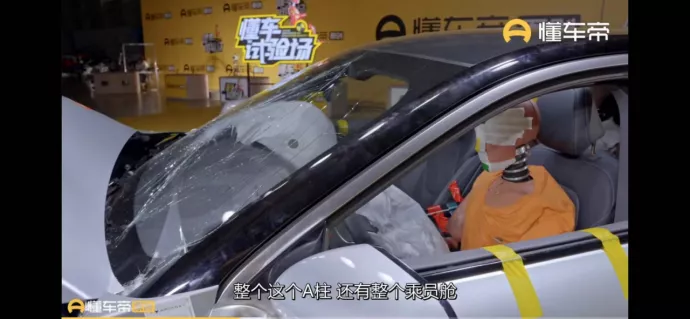
This is the ‘strong’ feature of Geely Lynk & Co Zero Concept S – it keeps the high strength of the passenger compartment. At the positions of A-pillar, B-pillar and door sill, Geely Lynk & Co Zero Concept S adopts ultra-high-strength hot-formed steel with a strength of up to 1500MPa. By designing a ‘structural ring’ concept and forming a ‘cage-style frame’ body structure, the entire structure can carry the collision energy and ensure the integrity of the passenger compartment during the collision.
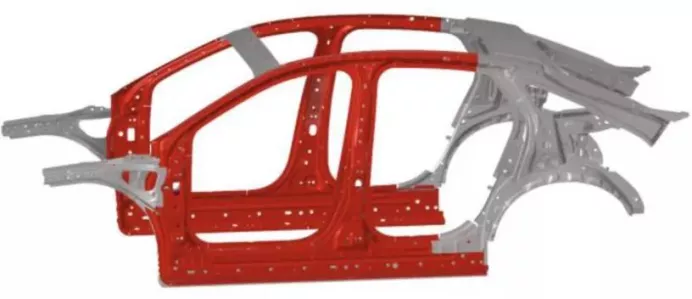
The so-called hot-formed steel refers to a process in which the steel is heated to 930°C before forming. With the same quality, its strength can be three to four times that of ordinary steel.
This is why, in the collision test of Dongchedi, the door of the Alpha S of Polestar can still be opened, the A-pillar has not deformed, and the passenger compartment frame is also intact.
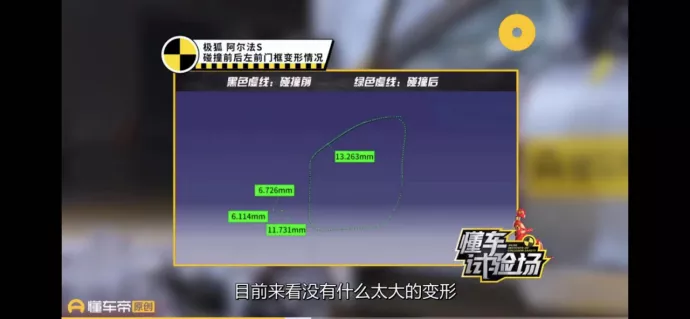
Dongchedi simulated a 50% overlap collision. In European crash tests, there is also a pillar impact test, which is not included in the Chinese collision test. For electric vehicles, if there is a similar accident involving a pillar impact and the battery pack is not well protected, it may affect the safety of the battery pack.
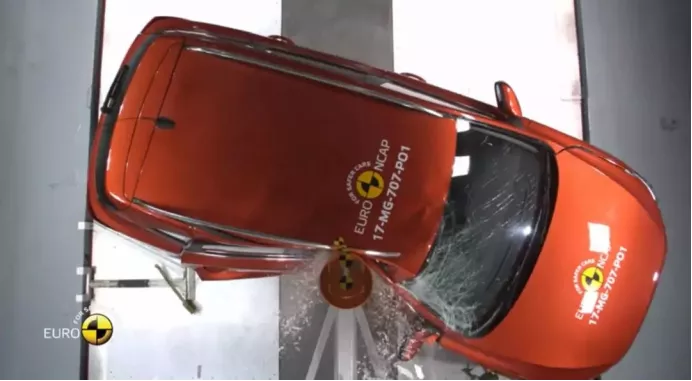
However, the Alpha S of Polestar can pass the pillar impact test because they have done a unique design.
At the threshold position, Polestar adopts the innovative concept of partial load-bearing beam, embedding an aluminum section into the steel threshold beam, which not only ensures strength, but also meets the requirements of side-pillar impact.
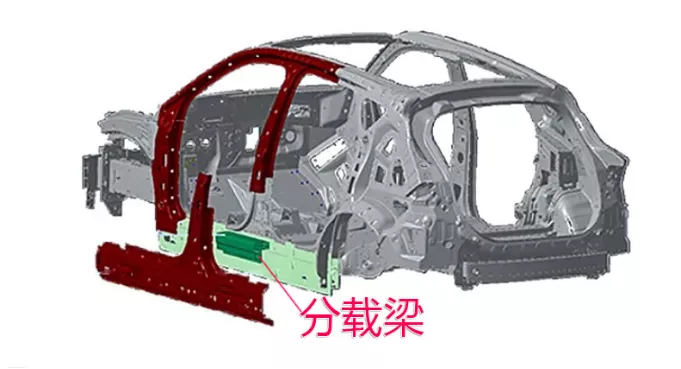
Lightweight on the basis of safety
From the front collision performance, Polestar vehicles have both steel and aluminum, each with its own advantages.
Steel, even hot-formed steel, keeps the vehicle strength well; while aluminum alloy ensures collision energy absorption.
In addition, aluminum alloy can make the vehicle lighter, which is beneficial to improve vehicle economy.
Polestar vehicles adopt the upper steel and lower aluminum “cage frame” body structure, and use ultra-high-level materials in key positions, such as hot-formed steel. Due to this structure, the Alpha T body stiffness is 55000Nm/deg, and the Alpha S reaches 60000Nm/deg.
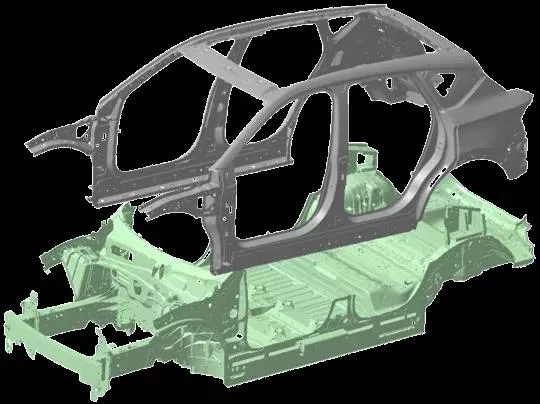
The so-called body stiffness is an indicator of the vehicle’s ability to resist deformation under external force. What is the level of 60000Nm/deg?# The Strongest Vehicle Body Stiffness in Electric Cars Is Owned by the Tesla Model 3
The Audi R8 has a body stiffness of 40000Nm/deg, while the BMW i8 has a body stiffness of 49000Nm/deg. However, the strongest vehicle body stiffness in electric cars belongs to the Tesla Model 3, which has a body stiffness of 45000Nm/deg. Compared with these models, there is almost no competitor that can match the body stiffness of the Alpha S from Polestar Motors.
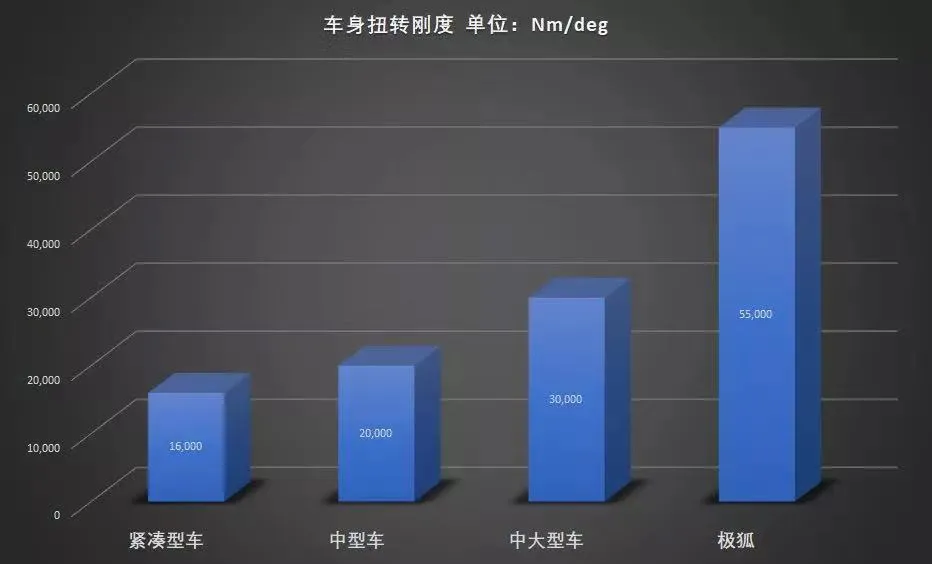
With such a stiffness, the safety of the Alpha S is guaranteed, and the lightweight level is also very high due to the addition of aluminum alloy.
Duan Lfei, the product director of Alpha S, stated that the body lightweight coefficient of Alpha T reaches 1.78, while that of Alpha S reaches 1.6, which is significantly ahead of the industry average of 2.8.
“Reducing the weight of the vehicle body by 10% can generally increase the cruising range by 6% to 8%. The lightweight body of Polestar Motors brings a very good foundation for the product’s ultra-long cruising range,” said Duan Lfei. The Alpha S has a maximum cruising range of up to 708km, which is the highest domestically produced one. Even the pure electric SUV Alpha T can reach a cruising range of 653km.
Advanced Production Process Ensures the Quality
The advantages of steel-aluminum hybrid are easy to understand, but not many car manufacturers use them because of the production process challenges.
Aluminum alloy materials cannot be connected with steel materials through traditional welding technology due to their different characteristics. To solve this problem, Polestar Motors’ Langyuan Magna plant has applied advanced connection technologies such as SPR (self-piercing riveting), FDS (hot-melt self-tapping screw connection), and adhesive bonding to make the connection between materials more secure and achieve a perfect connection between steel and aluminum.
The so-called self-pierce riveting process uses an impact force to pierce the rivet through the sheet while forming a locking mechanism inside the mold. This method does not damage the coating of the sheet during the connection process.
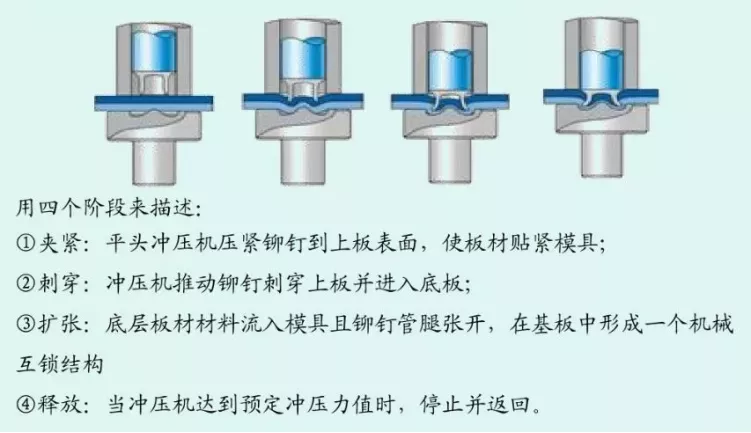
The hot-melt self-tapping screw connection process drills the screw into the sheet and generates heat through friction while tapping the thread, achieving the clever function of riveting, screwing, and even welding.
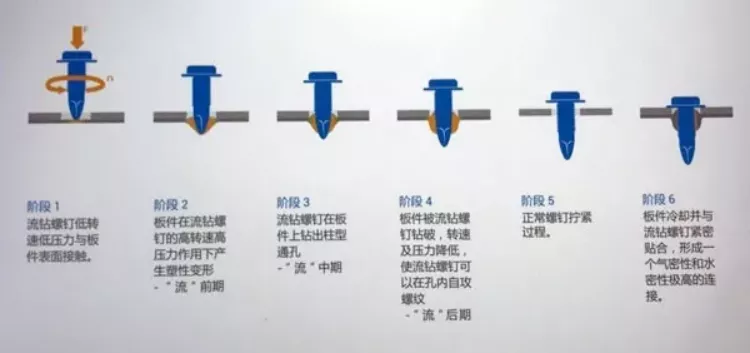 Taking the Geely ARCFOXcha Alpha S as an example, its body is equipped with 1276 SPR lock-rivet screws, 430 FDS flow-drilling screws, and over 150 meters of high-strength structural adhesive. In addition to enhancing the body stiffness, the extensive use of these advanced connection technologies also enables the overall vehicle airtightness of the Alpha S to reach 58 SCFM.
Taking the Geely ARCFOXcha Alpha S as an example, its body is equipped with 1276 SPR lock-rivet screws, 430 FDS flow-drilling screws, and over 150 meters of high-strength structural adhesive. In addition to enhancing the body stiffness, the extensive use of these advanced connection technologies also enables the overall vehicle airtightness of the Alpha S to reach 58 SCFM.
These advanced technologies require skilled craftsmen. Geely’s steel-aluminum hybrid body is produced by the Blue Valley Magna factory. Magna has a high reputation in the field of vehicle manufacturing and is a manufacturer for many internationally renowned high-end brand vehicles, such as the Mercedes-Benz G-Class, the new BMW 5 Series, Jaguar E-PACE, and i-PACE, etc. The Blue Valley Magna factory is Magna’s first joint venture factory in China, which comprehensively introduces the Magna Mafact production system and lays a solid foundation for the good quality and workmanship of Geely vehicles.
The Battery Pack with the Highest Energy Density
Geely vehicles have the best range performance among mass-produced vehicles, mainly because they are equipped with large-capacity battery packs that are relatively light.
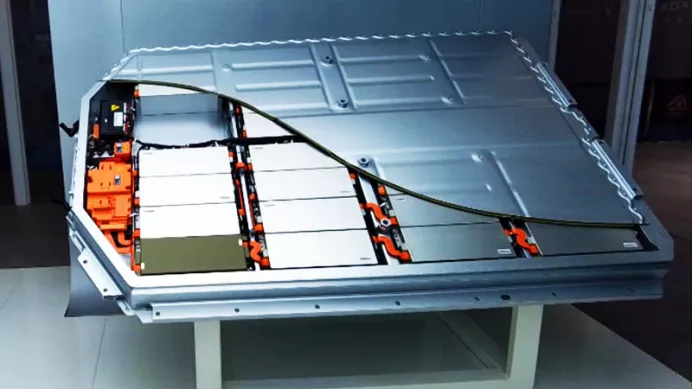
Taking the Geely ARCFOXcha Alpha S’s battery pack as an example, it contains a capacity of over 93 kWh. However, due to its energy density of up to 194 Wh/kg, which is basically the highest level in China, the battery pack weighs less than 500 kg.
The safety of the battery pack has also been given great attention by designers and engineers. Geely uses a reinforced design of four transverse and one longitudinal battery pack strengthening bar, unique water pipe weakening structure, 50MM wide frame design, middle layout of high-voltage wire harness, constant temperature management and protection, IP68 level waterproof and dustproof, column collision damage protection and other designs to ensure safety. In the collision test by Autohome, Geely ARCFOXcha Alpha S’s battery pack remained intact.
From the perspective of Geely’s vehicle body structure and battery pack safety design, Geely’s basic skills – safety – are leading in the industry. With this foundation, and assisted by functions, configurations, experiences, and services, Geely’s products will gradually win consumer recognition.
This article is a translation by ChatGPT of a Chinese report from 42HOW. If you have any questions about it, please email bd@42how.com.